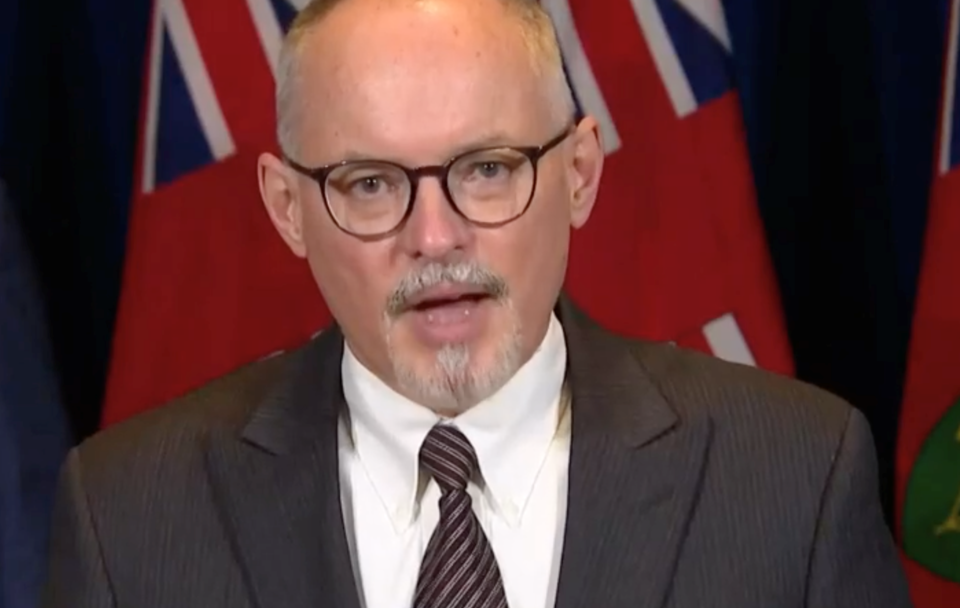When students return to school after March Break, masking will no longer be required. It's a stark change from the past couple of years when COVID-19 restrictions kept students at home for extended periods after the break.
Today, chief medical officer of health Dr. Kieran Moore revealed the province's new longer-term approach. The new direction moves away from relying on provincial mandates and aims to offer consistent guidance across all sectors. Guidance for people with COVID or exposed to the virus is also changing, along with how the province is reporting data.
Most of the masking mandates in Ontario are lifting March 21 as part of the province's plan to drop the remaining COVID-19 measures. All masking measures will drop on April 27. When masking is no longer mandated, officials are still encouraging it.
Moore said people should be prepared that mask mandates could return if a new variant surfaces.
The key dates in the plan are:
March 14
- Mandatory vaccination policies end, although organizations can retain their own policies. Directive 6 and letters of instruction to the Ministry of Children, Community and Social Services, Ministry of Seniors and Accessibility, and Ministry of Education will be revoked.
- Organizations may retain their own policies and Ontario will continue providing rapid antigen tests.
March 21
- Most masking mandates end, including in schools. The places people will still need masks are public transit, long-term care and retirement homes, health-care settings, shelters, jails and congregate care settings such as homes for individuals with developmental disabilities.
- Lift other measures in schools such as cohorting and daily on-site screening.
- Remove all regulatory requirements for businesses, including passive screening and safety plans.
- Rapid antigen tests and PPE will continue to be provided to schools and businesses.
- Enhanced cleaning, optimizing air quality and ventilation and absence reporting to remain at schools.
March 28
- Reopening Ontario Act expires. The emergency order will have a final extension of 30 days.
April 27
- Masking requirements in remaining settings will be lifted.
- Remaining emergency orders under the Reopening Ontario Act expire.
- Directives 1, 2.1, 3, 4 and 5 will be revoked.
For non-household contacts of people exposed to COVID-19, there are no longer any isolation requirements for any groups. For 10 days after exposure, close contacts should self-monitor for symptoms, wear a mask and avoid places where the mask would be removed, not visit higher-risk people, and not visit or go to work in highest-risk settings unless you've tested positive in the last 90 days.
The advice has also changed for people living in the same house as a confirmed case.
People who have tested positive in the last 90 days, who are over 18 years and received a booster, or who are under 18 years and fully vaccinated do not need to self-isolate. They should follow the precautions for close contacts for 10 days. People who fall outside of one of the three criteria must self-isolate.
Starting on Friday, March 11, there will be changes in how COVID-19 data is reported.
There will be more insight into the deaths related to the virus. The numbers will report if COVID was the cause of death, contributed to death, cause of death is unknown or missing.
The number of people one case will infect with COVID-19 (the reproductive number) will no longer be reported. Access to PCR testing in Ontario has been limited this year and the new case counts reported daily are underestimated, with Moore having said case counts are expected to be 10 times what's reported.
Outbreaks will only be reported for high-risk settings.
The frequency of when the province reports COVID data is also being examined.
